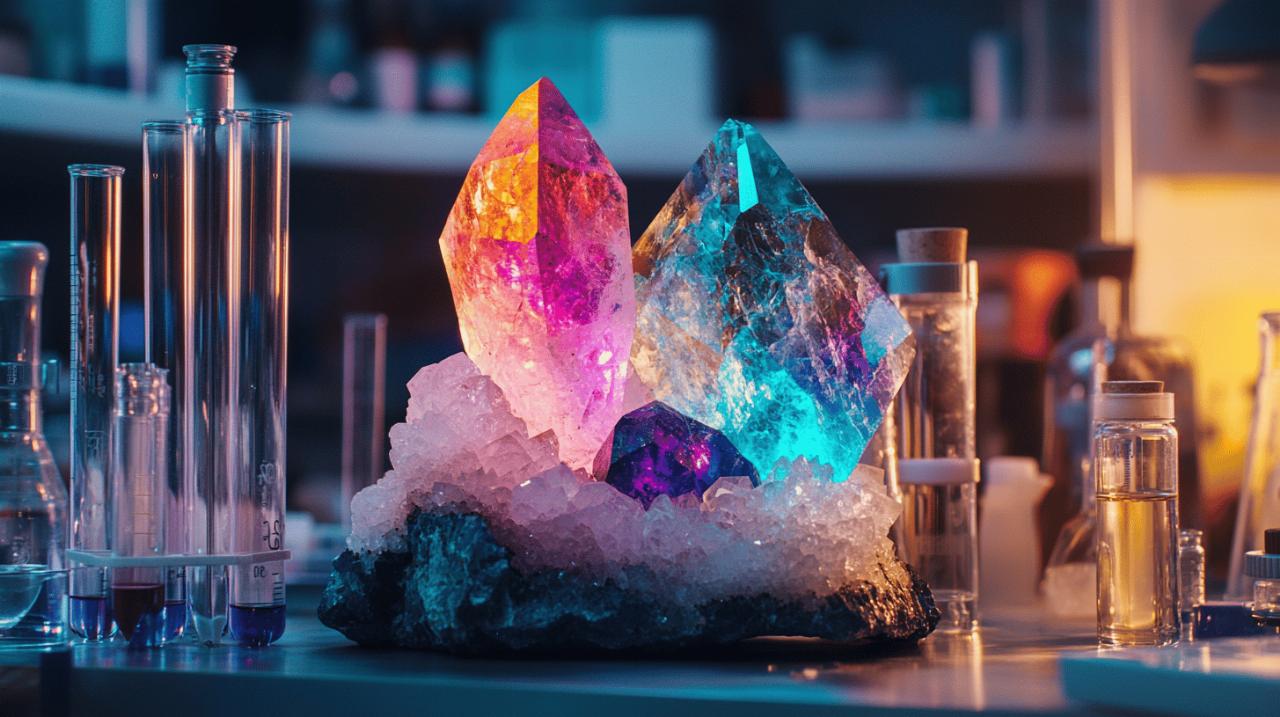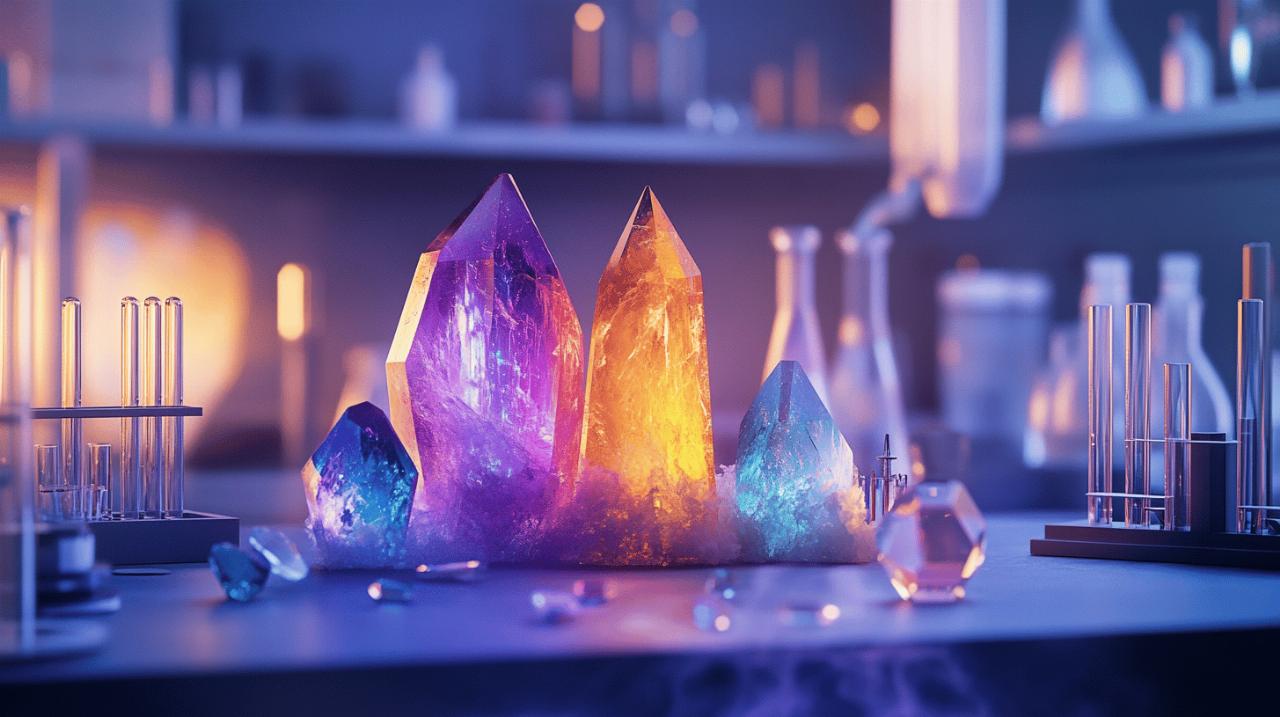Neurological Effects of Crystal Resonance: What Clinical Studies Reveal About Lithotherapy vs Science and Scientific Evidence

The debate surrounding the use of crystals for healing purposes has captivated enthusiasts and sceptics alike for generations. Whilst proponents of lithotherapy assert that stones and minerals possess unique vibrational properties capable of influencing human physiology, the scientific community remains largely unconvinced. This exploration delves into the intersection of ancient healing practices and modern clinical research, examining whether crystal therapy stands up to rigorous scientific scrutiny or whether its perceived benefits are merely the result of psychological phenomena.
Understanding lithotherapy: historical claims and modern neurological assertions
The Origins and Principles of Crystal Healing Practices
For thousands of years, civilisations across the globe have turned to crystals for healing and balance. The ancient Egyptians, for instance, incorporated these minerals into their rituals, using them for protection and to guide the souls of the departed. Similarly, Hindu Vedas and Ayurvedic medicine have long documented the purported healing powers of various stones. These traditional practices were rooted in the belief that crystals could interact with the body's energy field, promoting physical and spiritual wellness. Today, advocates of crystal healing maintain that these materials, due to their orderly atomic structure, emit consistent energy frequencies that can influence human chakras and restore balance to the mind, body, and spirit. The notion that crystals possess therapeutic benefits has persisted through the ages, evolving into what is now commonly referred to as lithotherapy or crystal healing.
Claimed neurological mechanisms: vibrational frequencies and brain activity
Central to the theory of lithotherapy is the concept of vibrational energy. Supporters argue that crystals, owing to their stable and repeating atomic patterns, generate consistent vibrational messages that can resonate with the human energy field. Some proponents suggest that specific frequencies can have targeted effects on the body. For example, certain studies have proposed that a frequency of 528 Hz might aid in DNA repair, whilst 174 Hz could reduce pain and 285 Hz might assist in tissue healing. These claims extend to the idea that crystals can influence physiological parameters such as skin conductance and heart rate variability, suggesting a measurable impact on the nervous system. Additionally, the work of researcher Marcel Vogel, who investigated the capacity of crystals to accumulate what he termed life-force energy, has been cited by enthusiasts as evidence of a tangible interaction between these stones and human biology. However, the scientific validity of these assertions remains a matter of considerable debate.
The scientific method applied: examining clinical research on crystal resonance
Reviewing Peer-Reviewed Studies on Lithotherapy and Neurological Outcomes
When one applies the rigorous standards of the scientific method to lithotherapy, the picture becomes markedly less clear. A notable investigation presented at the European Congress of Psychology in Rome in 2001 sought to determine whether crystals genuinely produce the sensations attributed to them. Participants in this study were given either real crystals or fake ones, yet both groups reported similar experiences, such as tingling sensations or warmth. Interestingly, individuals who held stronger beliefs in paranormal phenomena reported more pronounced sensations, regardless of whether they were handling authentic or counterfeit stones. This finding raises important questions about the role of expectation and belief in the perceived efficacy of crystal therapy. Furthermore, whilst some research has suggested that crystals might affect certain physiological markers, the scientific community has largely remained sceptical due to the lack of reproducibility and the difficulty in isolating the effects of the stones from other variables.
Methodological rigour: double-blind trials and placebo-controlled investigations
For a treatment to be deemed scientifically valid, it must withstand the scrutiny of double-blind, placebo-controlled trials. In such studies, neither the participants nor the researchers know who is receiving the genuine treatment and who is receiving a placebo, thereby eliminating bias. The 2001 study mentioned earlier exemplifies this approach, as participants were unable to distinguish between real and fake crystals based on their sensations alone. This suggests that any effects experienced may not be due to the intrinsic properties of the crystals themselves but rather to the power of suggestion. The challenge with lithotherapy is that the purported vibrations emitted by crystals are often described as too subtle or numerous to measure with current scientific instruments, making it exceedingly difficult to design experiments that can definitively prove or disprove their effects. Without such rigorous methodological standards, claims about the therapeutic benefits of crystals remain speculative at best.
What the Evidence Actually Shows: Placebo Effect vs Genuine Therapeutic Benefit
Neuroimaging and biofeedback studies: measuring objective brain responses
 Objective measures such as neuroimaging and biofeedback offer a window into the brain's response to various stimuli, yet studies employing these tools to investigate crystal healing are scarce. Some research has indicated that meditation with crystals can produce similar effects to meditation without them, suggesting that the practice of meditation itself, rather than the presence of the stones, may be responsible for any observed benefits. The mind-body connection is a powerful phenomenon, and the act of focusing one's intention during meditation can lead to measurable changes in brain activity and physiological states. However, when researchers have attempted to isolate the effects of the crystals themselves, the results have been inconclusive. The lack of consistent, reproducible findings in neuroimaging studies casts doubt on the claim that crystals exert a direct influence on brain function through their vibrational properties.
Objective measures such as neuroimaging and biofeedback offer a window into the brain's response to various stimuli, yet studies employing these tools to investigate crystal healing are scarce. Some research has indicated that meditation with crystals can produce similar effects to meditation without them, suggesting that the practice of meditation itself, rather than the presence of the stones, may be responsible for any observed benefits. The mind-body connection is a powerful phenomenon, and the act of focusing one's intention during meditation can lead to measurable changes in brain activity and physiological states. However, when researchers have attempted to isolate the effects of the crystals themselves, the results have been inconclusive. The lack of consistent, reproducible findings in neuroimaging studies casts doubt on the claim that crystals exert a direct influence on brain function through their vibrational properties.
The Role of Expectation and Belief in Perceived Crystal Effects
The placebo effect is a well-documented phenomenon wherein patients experience real improvements in their condition despite receiving a treatment with no therapeutic value. Christopher French, a psychologist who has studied the effects of crystals, suggests that the sensations and benefits reported by users are likely attributable to the power of suggestion rather than to the stones themselves. Indeed, a 2008 study published in the British Medical Journal found that approximately half of the physicians surveyed had used placebo treatments, acknowledging their potential to make patients feel better even in the absence of active ingredients. Ted Kaptchuk, a leading researcher in this field, has argued that the benefits of the placebo effect should be embraced and promoted, as they demonstrate the profound influence of the mind on physical health. In the context of lithotherapy, it appears that belief in the healing properties of crystals can generate genuine improvements in well-being, even if the crystals themselves possess no inherent therapeutic qualities. This does not diminish the subjective value that individuals derive from using crystals, but it does highlight the importance of distinguishing between genuine pharmacological effects and those mediated by expectation.
Scientific consensus and critical analysis: where does lithotherapy stand today?
Evaluating the Quality and Reproducibility of Existing Research
A critical examination of the existing body of research on lithotherapy reveals significant gaps in quality and reproducibility. Many studies cited by proponents of crystal healing suffer from methodological flaws, such as small sample sizes, lack of control groups, and inadequate blinding. Moreover, the field is plagued by a dearth of peer-reviewed, high-quality investigations that meet the rigorous standards required for scientific validation. The challenge of measuring the purported vibrations of crystals adds another layer of complexity, as these effects are often described in terms that are difficult to quantify or replicate. Without consistent, reproducible evidence, the scientific community remains unconvinced that crystals exert any direct physiological effects beyond those attributable to the placebo effect. This is not to say that future research could not yield surprising findings, but as it stands, the evidence base for lithotherapy is insufficient to support the bold claims made by its advocates.
The Medical and Scientific Community's Position on Crystal Therapy Claims
The mainstream medical and scientific community generally regards crystal healing as a form of pseudoscience. This scepticism is rooted in the lack of credible, replicable evidence demonstrating that crystals can treat or cure ailments through their supposed vibrational properties. Whilst alternative therapies such as acupuncture and Reiki have gained some acceptance following targeted research, lithotherapy has yet to achieve similar recognition. That said, the role of complementary therapy in promoting holistic healing and spiritual wellness is not entirely dismissed. Many healthcare professionals acknowledge that practices which foster a sense of calm, encourage mindfulness, and promote the mind-body connection can have real benefits for patients, even if the mechanisms are not as advertised. In this light, crystals may serve as valuable tools for meditation and wellness rituals, provided that their use does not replace evidence-based medical treatment. The key distinction lies in recognising that any benefits derived from crystal therapy are likely mediated by psychological factors rather than by the intrinsic properties of the stones themselves. As such, individuals are encouraged to approach lithotherapy with a critical yet open mind, appreciating its potential to support emotional well-being whilst remaining cautious of overstated claims.

